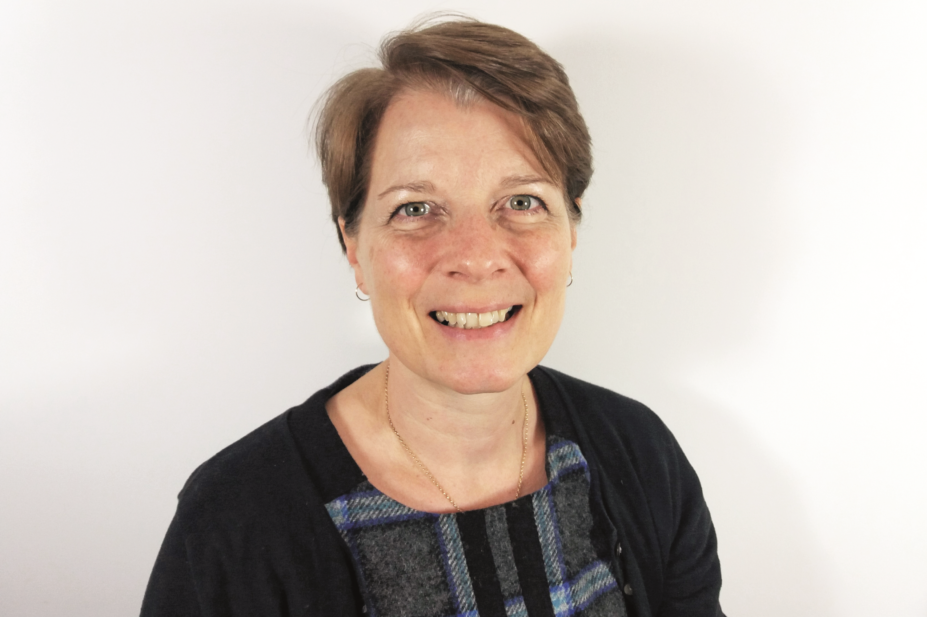
Courtesy of Kayt Blythin
Kayt Blythin is a principal clinical pharmacist for medicines optimisation for care homes at Sussex Community NHS Foundation Trust.
What is your current role and what path did you take to get here?
Since 2016, I have been lead for the Medicines Optimisation for Care Homes service (MOCH) in East Sussex. I qualified from Liverpool John Moores University School of Pharmacy in 2007, having previously worked in human resources. In the 1990s, I worked for social services on the “Purchaser Provider” split for care homes, and it is refreshing to find considerable care standard improvements 25 years later.
I split my preregistration year between hospital and community pharmacy, and I still continue to locum today. In 2010, I completed a clinical diploma with Cardiff University, while working as a hospital and community pharmacist initiating domiciliary medicines use reviews for housebound patients. On moving to Sussex in 2013, I worked with Community Proactive Care Services, delivering domiciliary medicines reviews, and completed the independent prescribing course from Brighton University in 2016.
What are the tasks and responsibilities associated with your role?
My role is divided between clinical care home activities and the management and development of the service and team which consists of six clinical pharmacists (four whole time equivalent), and two pharmacy technicians. We cover 4000 beds from 44 GP surgeries and 167 care homes where residents receive an annual personalised medicines optimisation review from a clinical pharmacist. The technicians work in care homes developing a person-centred approach to medicines management through action plans and training.
I also deliver medicines optimisation education to GPs and health practitioners working in older peoples’ medicine across the south east of England.
What influenced you to follow this career path?
Working with older people and optimising their medicines has been the cornerstone of my community and hospital work. I have witnessed the benefits of reducing pill burden in this often neglected cohort. Being an advocate for older people and ensuring they have timely access to health services seems morally the right thing to do — especially when their ability to independently engage with services is challenged by their circumstances.
What is the significance of having a pharmacist-led medicines optimisation service in a care home?
Our MOCH clinical pharmacists appreciate that evidence-based medicine will not necessarily apply to frail, older people with complex needs. We work hard on consultation skills to ensure reviews are resident-focused, addressing their wishes and concerns. Many residents have dementia, which challenges us to assess capacity and avoid assumptions about their inability to discuss medicines — next of kin or proxy representatives are often involved in the review, which is frequently more than just medicines optimisation. Reviews may involve clinical observations, establishing next of kin and end-of-life wishes.
Our records are part of the GP EMIS system, facilitating collaborative working with GPs, the practice team and other clinicians, and ensuring a multidisciplinary approach and effective handover of medication changes to avoid inadvertent restarting or stopping of medicines.
How did you establish the medicines optimisation service?
The service is the result of years of planning and piloting across the two clinical commissioning groups (CCGs) I work with. The CCG Medicines Management team developed the specification and went through a full procurement process. Following a successful bid, we were awarded the contract and the service has now been running for nearly two years. Having a service, rather than a project, allows momentum and growth, instead of continuous evaluation and justification, says Kayt Blythin
Initially, considerable time was spent developing practicalities and infrastructure, such as information governance, standard operating procedures and IT, and consistent reporting and data collection for pharmacist key performance indicators.
We also created an action plan for key development areas and held meetings with the team and senior managers to review progress every quarter.
What challenges did you face developing the service?
Developing relationships with our main interfacing providers — care homes, GPs and community pharmacy — was vital. It was, and still is, worth the ongoing time investment.
Recruiting the right clinical pharmacists and pharmacy technicians was also crucial. The roles require autonomy and independence to stay loyal to the service requirements. Pharmacists must have the experience and confidence to make complex clinical decisions and communicate these effectively. Technicians work alone in care homes and need to understand these are privately owned organisations — it takes a collaborative approach to influence leadership and change practice.
How do you prove the value of such a service to funders?
We report on our key performance indicators quarterly to demonstrate medicines optimisation activity. Avoidable waste (e.g. laxatives, analgesia and creams) is quantified and measured as part of the care home action plans, demonstrating additional cost savings.
We collate data on cost savings of medicines stopped and avoidance of harm scoring for one month per year, and extrapolate to give an estimated annual saving. Qualitative data is also collected, such as intervention summaries and feedback questionnaires to service users (GPs, care homes and community pharmacy). Feedback from residents and their families is less formal and anecdotal.
Ultimately, we evaluate the benefit of medicines optimisation in a systematic and meaningful way, working with universities and the Academic Health Science Network to achieve this.
How will additional funding from NHS England influence the career of pharmacy professionals working in care homes?
Working in care homes defines a clear group of people, and allows pharmacy professionals to focus on a specific clinical area. It is a wonderful opportunity for pharmacists to utilise and develop their skills and knowledge while producing measurable outcomes.
The additional funding will facilitate an increase in numbers of pharmacy professionals working in care homes, and this in turn will ensure more people have optimised prescriptions. Collaborative working will engage GPs in practising this proactive approach to care.
My experience is that care homes are receptive to good medication advice and guidance. As they become more person-centred and less institutionalised, assistance with personalised care plans regarding medicines will be required.
There is increased focus on care homes for people over 65 years of age. However, learning disability and other forms of supported living establishments will also benefit from a medicines optimisation service.
What advice would you give pharmacists interested in a career in medicines optimisation in care homes?
Have a genuine interest in older people and how their social and health needs change. Continuing profesisonal development and good clinical knowledge can help with this. Undertaking modules around older people, polypharmacy, acute kidney injury, multimorbidity, the Mental Capacity Act, and consultation skills are easy to access and implement in day-to-day practice.
Talk to local commissioners and GP services about how to best deliver a care homes service to determine the predominant focus — for example, cost savings or positive resident outcomes. There are many services and projects already established. Spending a day with a peer from another locality can be invaluable.
It is an immensely rewarding role. My favourite comment from a resident’s relative is “I thought people like you were only talked about on the Radio 4 Today Programme — I’m so glad that this service really exists for my Mum”.


